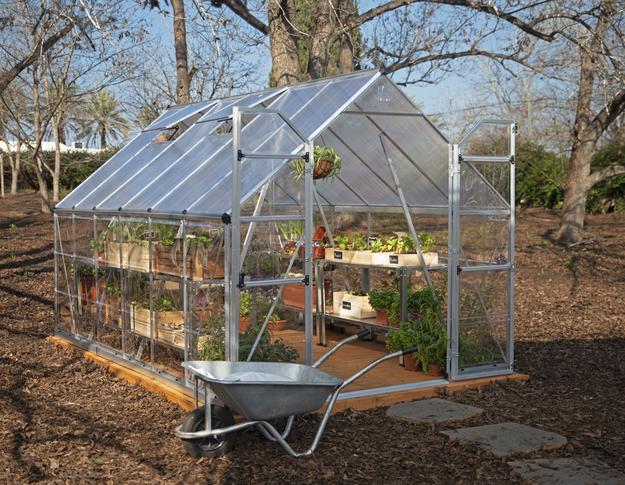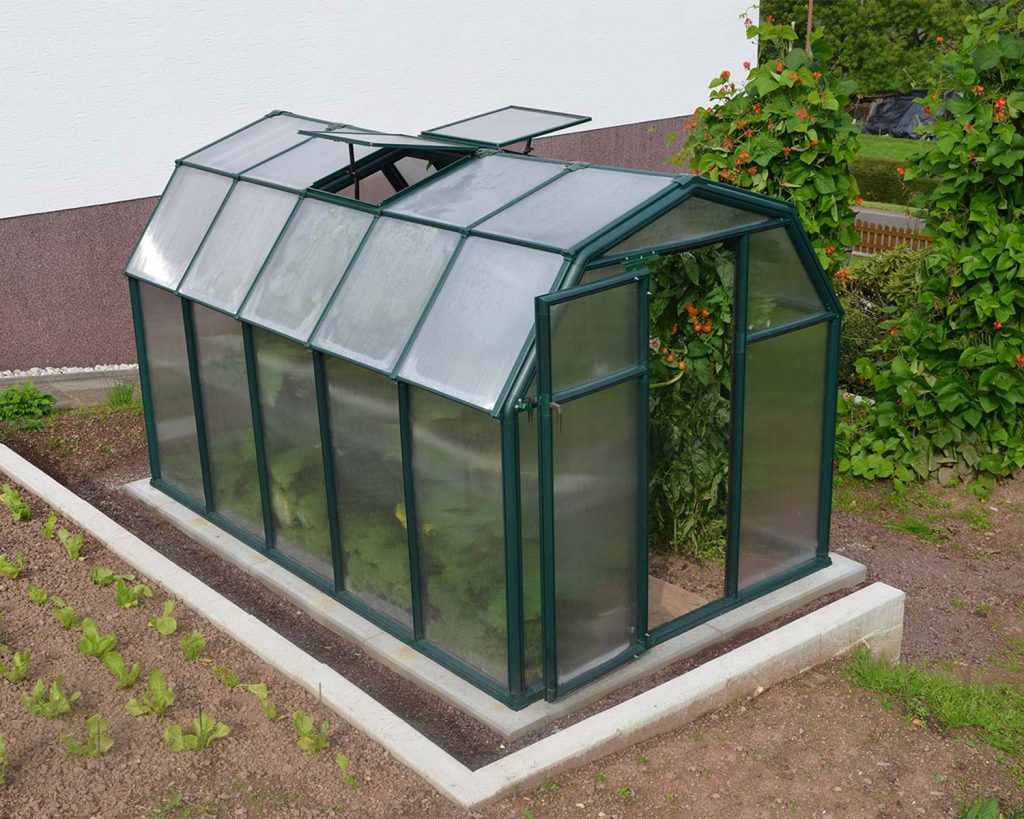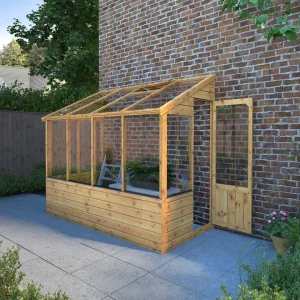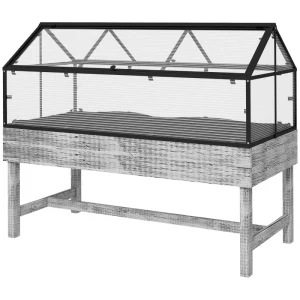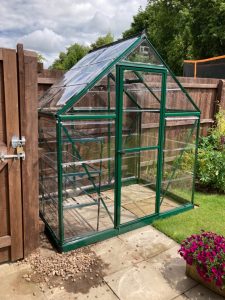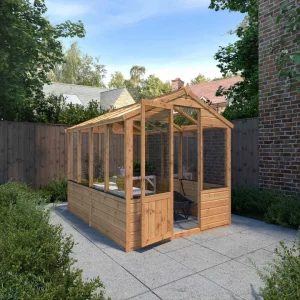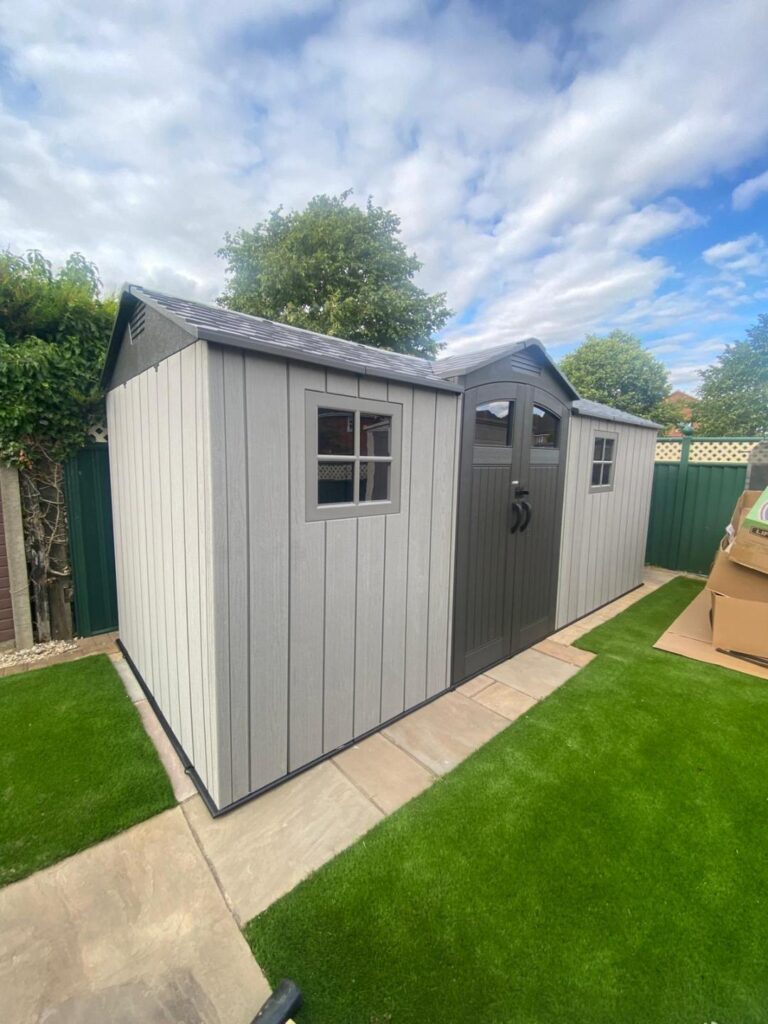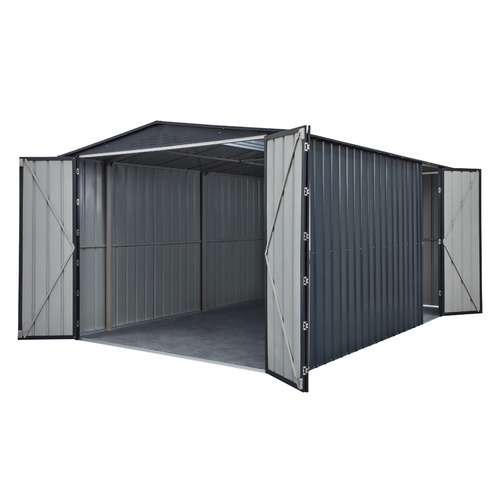How to buy the best greenhouse
How to buy the best greenhouse
A greenhouse is a major investment for your garden and one that’s not easy to move or replace once installed, so it’s important to pick the right one for your needs.
Whether you’re shopping for a small greenhouse to protect young plants or a larger alternative to work on fruit and veg, we can lend a helping hand. On this page, we’ve rounded up details on optimal materials and sizes, features to look out for, greenhouse accessories and heaters
Types of Greenhouses
Freestanding greenhouses
Pros: Lets in light from all sides, lots of choice, often roomy enough to work in
Cons: Can lose heat as all sides are exposed, you will have to find a way to get power to it
Freestanding greenhouses are often made from wood, aluminium or PVC. They are usually square or rectangular with an apex roof.
Most gardeners will opt for a 6 x 8ft (1.8 x 2.4m) or 8 x 10ft (2.4 x 3m) model. Think about freedom of movement and what you plan to grow when determining the ideal size – you might need double doors to move plants in and out, for example.
Freestanding greenhouses allow light in from all four sides, although this means they’re more exposed to the elements compared to other greenhouse types. You can install bubble insulation if needed. As these greenhouses can be quite large, you might also want to run electricity to the space so you can see in low light.
When deciding where to position your freestanding greenhouse, consider which parts of your garden get plenty of sunshine. You also need to think about the impact of strong gusts of wind and whether the building is well-protected.
Lean-To Greenhouses
Pros: Wind resistant, maximises unused space, can be particularly energy efficient
Cons: Not as much space to plant a variety of crops, fewer sides for light to enter
If you’re shopping for a greenhouse that isn’t exposed to the elements from every angle, consider a lean-to greenhouse. These join to an existing structure, such as a house or garage (shown above).
These greenhouses are a popular choice among gardeners working with limited space in their backyard, or those that want a greenhouse closer to their home. Having your greenhouse within a shorter distance means you don’t need to run water and electricity across the full length of your garden.
Lean-to greenhouses are often made from wood, although this needs to be maintained over the years, making aluminium a tempting alternative. The initial purchase costs are similar to a freestanding model, but a lean-to takes up less space and you only need access around three sides. It is also cheaper and easier to keep warm.
Mini Greenhouses
Pros: Space-saving, cheaper than a full-sized greenhouse, most can be stowed away
Cons: Can be difficult to tend to plants if you have limited mobility, limited growing space
A mini greenhouse is like a glazed cupboard with shelves that sits on a patio or under a window, using a house wall or garage as protection – perfect if space is limited. It will protect trays or pots of young plants from late frosts in spring, and encourage borderline crops such as peppers to ripen.
Ideally, a mini greenhouse should face east or west. South-facing ones overheat in spring or summer unless shaded, and north-facing ones suit only shade-loving plants.
Mini greenhouses are generally easy to set up and maintain, making them well-suited to both newbies and experienced gardeners. Some feature built-in grow lights, and many models can be dismantled and repositioned (or stored away) when needed.
Wooden vs aluminium greenhouse frames
Most greenhouse frames are made of aluminium. Wooden greenhouses are also available, though, and many gardeners find them more attractive to look at, despite the fact they need more maintenance compared to metal frames.
Aluminium greenhouses
Pros: Budget-friendly, durable, plain silver is maintenance-free, light and easy to assemble
Cons: Fastenings needed to attach shading material, tricky to extend, insulation can be poor, usually need to add your own base
Aluminium is the most common material for greenhouses, which means you’ll be spoilt for choice. These models are available in a variety of shapes and sizes, so you’ll have some options that suit your budget.
Generally speaking, aluminium greenhouses are considered low maintenance as they’re able to withstand harsh weather. Aluminium won’t warp or crack over time, and the material is rust-resistant. A lightweight metal construction also ensures the greenhouse is easy to move.
Wooden Greenhouses
Pros: Can stain to a specific colour, easy to attach shading material, better insulation
Cons: Can be expensive, usually need to add your own base (keeping the wooden frame off the damp ground), vulnerable to rust, needs regular maintenance
Wooden greenhouses are less common and typically cost more than their aluminium counterparts. Picking the right type of wood will help avoid a greenhouse that’s vulnerable to rot. Softwoods, such as deal (pine), are vulnerable to rot, even if the timber has been treated.
Wood is a natural insulator, so it should retain heat fairly well once winter rolls around. You can add additional insulation panels to your wooden greenhouse if needed.
Naturally durable timber – usually western red cedar – can be left to age to a silver-brown. For looks, a western red cedar greenhouse is hard to beat. Look for manufacturers that offer a guarantee against rot.
For gardeners working with a limited budget, be aware that you’ll usually need to add your own base to a wooden greenhouse.

